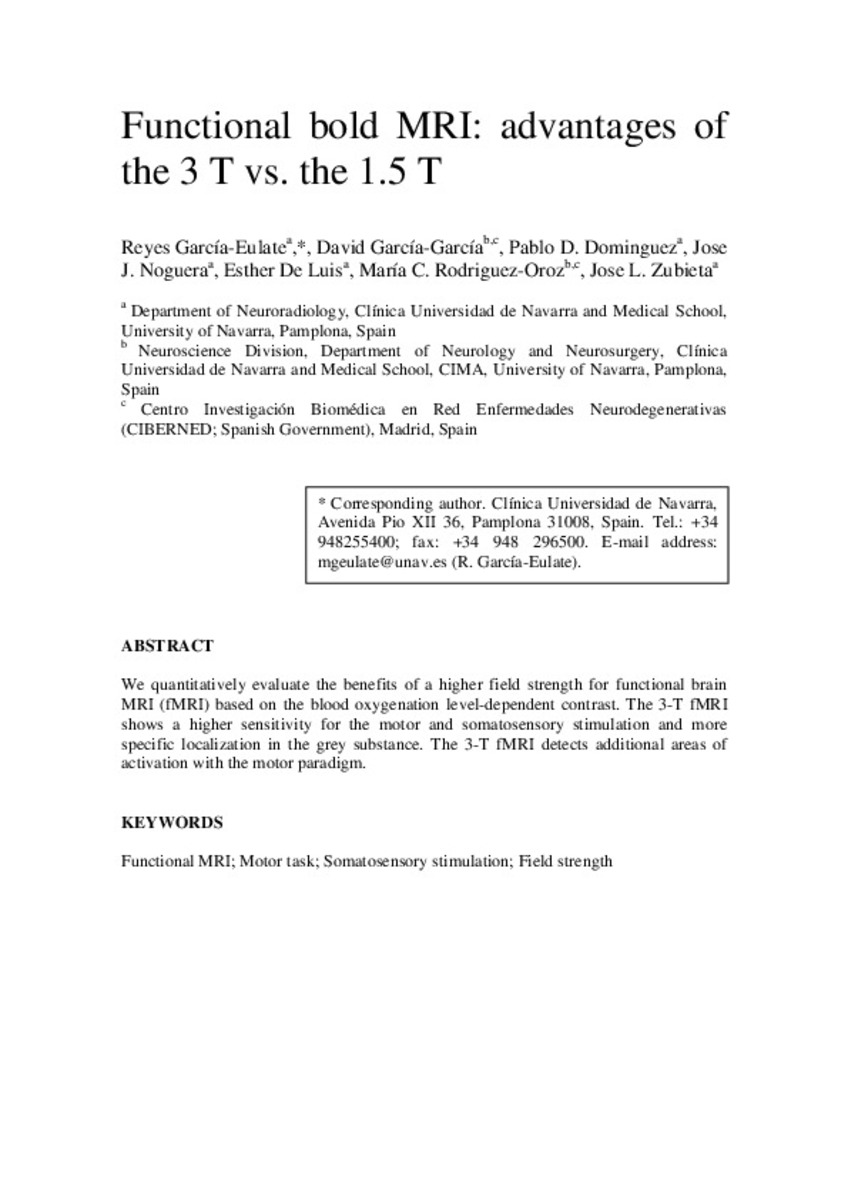Full metadata record
| DC Field | Value | Language |
|---|---|---|
| dc.creator | Garcia-de-Eulate, R. (Reyes) | - |
| dc.creator | Garcia-Garcia, D. (David) | - |
| dc.creator | Domínguez-Echávarri, P.D. (Pablo Daniel) | - |
| dc.creator | Noguera, J.J. (José J.) | - |
| dc.creator | Luis, E. (Esther) de | - |
| dc.creator | Rodriguez-Oroz, M.C. (María Cruz) | - |
| dc.creator | Zubieta, J.L. (José L.) | - |
| dc.date.accessioned | 2012-12-12T12:42:18Z | - |
| dc.date.available | 2012-12-12T12:42:18Z | - |
| dc.date.issued | 2011 | - |
| dc.identifier.citation | Garcia-Eulate R, Garcia-Garcia D, Dominguez PD, Noguera JJ, De Luis E, Rodriguez-Oroz MC, et al. Functional bold MRI: advantages of the 3 T vs. the 1.5 T. Clin Imaging 2011 May-Jun;35(3):236-241. | es_ES |
| dc.identifier.issn | 0899-7071 | - |
| dc.identifier.uri | https://hdl.handle.net/10171/27457 | - |
| dc.description.abstract | We quantitatively evaluate the benefits of a higher field strength for functional brain MRI (fMRI) based on the blood oxygenation level-dependent contrast. The 3-T fMRI shows a higher sensitivity for the motor and somatosensory stimulation and more specific localization in the grey substance. The 3-T fMRI detects additional areas of activation with the motor paradigm. | es_ES |
| dc.language.iso | eng | es_ES |
| dc.publisher | Elsevier | es_ES |
| dc.rights | info:eu-repo/semantics/openAccess | es_ES |
| dc.subject | Evoked Potentials, Motor/physiology | es_ES |
| dc.subject | Motor Cortex | es_ES |
| dc.subject | Reproducibility of Results | es_ES |
| dc.title | Functional bold MRI: advantages of the 3 T vs. the 1.5 T | es_ES |
| dc.type | info:eu-repo/semantics/article | es_ES |
| dc.type.driver | info:eu-repo/semantics/article | es_ES |
| dc.identifier.doi | http://dx.doi.org/10.1016/j.clinimag.2010.07.003 | es_ES |
Files in This Item:
Statistics and impact
Items in Dadun are protected by copyright, with all rights reserved, unless otherwise indicated.






